-
Terry "Teruo" Kawamura

Army Cpl. Terry Kawamura served in the 173rd Engineer Company, 173d Airborne Brigade in Vietnam. He was posthumously awarded the Medal of Honor for actions in Camp Radcliff, Republic of Vietnam, March 20, 1969. On this day, Kawamura ran into enemy fire and took the charge of a grenade to save his fellow soldiers. He was awarded the Medal of Honor for conspicuous gallantry and intrepidity in action at the risk of his life above and beyond the call of duty.
-
Elmelindo R. Smith

Army Platoon Sgt. Elmelindo R. Smith served in the 1st Platoon, Company C, 2nd Battalion, 8th Infantry Regiment, 4th Infantry Division. He was posthumously awarded the Medal of Honor Feb. 16, 1967, for conspicuous gallantry and intrepidity at the risk of his life above and beyond the call of duty. During a reconnaissance patrol, his platoon was suddenly engaged by intense machine-gun fire. With complete disregard for his safety, Smith moved through the deadly fire along the defensive line, positioning soldiers, distributing ammunition and encouraging his men to repel the enemy attack. Repeatedly struck by enemy fire, Smith perished. The valorous acts and heroic leadership of this outstanding soldier inspired those remaining members of his platoon to beat back the enemy assaults. Smith’s gallant actions were in keeping with the highest traditions of the U.S. Army and they reflect great credit upon him and the armed forces of his country.
-
Rodney J.T. Yano

Army Sgt. 1st Class Rodney J.T. Yano served in the Air Cavalry Troop, 11th Armored Cavalry Regiment. He was posthumously awarded the Medal of Honor for his actions near Bien Hao, Republic of Vietnam, Jan. 1, 1969. Yano was performing the duties of crew chief aboard the troop’s command-and-control helicopter during action against enemy forces entrenched in dense jungle. From an exposed position in the face of intense small arms and antiaircraft fire he delivered suppressive fire upon the enemy forces and marked their positions with smoke and white phosphorous grenades, thus enabling his troop commander to direct accurate and effective artillery fire against the hostile emplacements. A grenade, exploding prematurely, covered him with burning phosphorous, and left him severely wounded. Yano completely disregarded his welfare and began hurling blazing ammunition from the helicopter. In so doing he inflicted additional wounds upon himself, yet he persisted until the danger was past. Yano’s indomitable courage and profound concern for his comrades averted loss of life and additional injury to the rest of the crew. By his conspicuous gallantry at the cost of his life, in the highest traditions of the military service, Yano has reflected great credit on himself, his unit and the U.S. Army.
-
Anthony T. Kaho'ohanohano

Army Pfc. Anthony T. Kaho’ohanohano served in Company H, 17th Infantry Regiment, 7th Infantry Division. He was awarded the Medal of Honor for his action against the enemy in the vicinity of Chupa-ri, Korea, Sept. 1, 1951. On that date, Kaho’ohanohano was in charge of a machine-gun squad supporting the defensive positioning of Company F when a numerically superior enemy force launched a fierce attack. Kaho’ohanohano gathered a supply of grenades and ammunition and returned to his original position to face the enemy alone. He fought fiercely and courageously, delivering deadly accurate fire into the ranks of the onrushing enemy. When his ammunition was depleted, he engaged the enemy in hand-to-hand combat until he was killed. Kaho’ohanohano’s heroic stand so inspired his comrades that they launched a counterattack that completely repulsed the enemy. Kaho’ohanohano’s extraordinary heroism and selfless devotion to duty are in keeping with the finest traditions of military service and reflect great credit upon himself, the 7th Infantry Division and the United States Army.
-
Hiroshi Miyamura

Army Cpl. Hiroshi H. Miyamura served in Company H, 7th Infantry Regiment, 3rd Infantry Division. He was awarded the Medal of Honor for his actions near Taejon-ni, Korea, on April 24 and 25, 1951. On the night of April 24, 1951, Company H was occupying a defensive position when the enemy attacked, threatening to overrun the position. A machine-gun squad leader, Miyamura, aware of the imminent danger to his men, unhesitatingly jumped from his shelter wielding his bayonet in close hand-to-hand combat, killing approximately 10 of the enemy. When the intensity of the attack necessitated the withdrawal of the company, Miyamura ordered his men to fall back while he remained to cover their movement. He killed more than 50 of the enemy before his ammunition was depleted and though he was severely wounded, he continued to repel the enemy until his position was overrun. Miyamura’s indomitable heroism and consummate devotion to duty uphold the illustrious traditions of the military service.
-
Herbert K. Pililaau
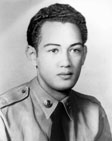
Army Pfc. Herbert K. Pililaau served in Company C, 23d Infantry Regiment, 2nd Infantry Division. He was posthumously awarded the Medal of Honor for his actions near Pia-ri, Korea, Sept. 17, 1951. The enemy sent fanatical troops against Pililaau’s platoon, which held a key terrain feature on “Heartbreak Ridge.” Valiantly defending its position, the unit repulsed each attack until ammunition became practically exhausted and it was ordered to withdraw to a new position. Voluntarily remaining behind to cover the withdrawal, Pililaau fired his automatic weapon into the ranks of the assailants, threw all his grenades and, with ammunition exhausted, closed with the foe in hand-to-hand combat, courageously fighting with his trench knife and bare fists until finally overcome and mortally wounded. His heroic devotion to duty, indomitable fighting spirit and gallant self-sacrifice reflect the highest credit upon himself, the infantry and the U.S. Army.
-
Jose Calugas

Army Sgt. Jose Calugas served in Battery B, 88th Field Artillery, Philippine Scouts. He was awarded the Medal of Honor as a result of his actions at Culis, Bataan province, Philippines, Jan. 1, 1942. A battery gun position was bombed and shelled by the enemy until one gun was put out of commission and all the cannoneers were killed or wounded. Calugas, a mess sergeant of another battery, voluntarily and without orders, ran 1,000 yards across the shell-swept area to the gun position. There he organized a volunteer squad, which placed the gun back in commission and fired effectively against the enemy, although the position remained under constant and heavy Japanese artillery fire.
-
Rudolph B. Davila
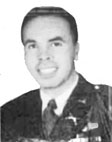
Army Staff Sgt. Rudolph B. Davila distinguished himself by extraordinary heroism in action May 28, 1944, near Artena, Italy. During the offensive that broke through the German mountain strongholds surrounding the Anzio beachhead, Davila risked death to provide heavy weapons support for a beleaguered rifle company. His intrepid actions brought desperately needed heavy weapons support to a hard-pressed rifle company and silenced four machine gunners, which forced the enemy to abandon their prepared positions. Davila’s extraordinary heroism and devotion to duty are in keeping with the highest traditions of military service and reflect great credit on him, his unit and the U.S. Army.
-
Barney F. Hajiro

Army Pvt. Barney F. Hajiro distinguished himself by extraordinary heroism in action on Oct. 19, 22 and 29, 1944, in the vicinity of Bruyeres and Biffontaine, eastern France. Hajiro, while acting as a sentry Oct. 19 on top of an embankment in the vicinity of Bruyeres, rendered assistance to allied troops attacking a house 200 yards away by exposing himself to enemy fire and directing fire at an enemy strong point. He assisted the unit on his right by firing his automatic rifle and killing or wounding two enemy snipers. On Oct. 22, he and one comrade took up an outpost security position about 50 yards to the right front of their platoon, concealed themselves, and ambushed an 18-man, heavily armed enemy patrol, killing two, wounding one and taking the remainder as prisoners. On Oct. 29, in a wooded area in the vicinity of Biffontaine, Hajiro initiated an attack up the slope of a hill while under fire. He fearlessly and single-handedly destroyed two machine gun nests and killed two enemy snipers. As a result of Hajiro’s heroic actions, the attack was successful. Hajiro’s extraordinary heroism and devotion to duty are in keeping with the highest traditions of military service and reflect great credit upon him, his unit and the U.S. Army.
-
Mikio "Kio" Hasemoto

Army Pvt. Mikio Hasemoto distinguished himself by extraordinary heroism in action on Nov. 29, 1943, in the vicinity of Cerasuolo, Italy. A force of approximately 40 enemy soldiers, armed with machine guns, machine pistols, rifles and grenades, attacked the left flank of his platoon. Two enemy soldiers with machine guns advanced forward, firing their weapons. Hasemoto, an automatic rifleman, challenged these two machine gunners. When his weapon was damaged, he ran 10 yards to the rear, secured another automatic rifle and continued to fire until his weapon jammed. Hasemoto again ran through a barrage of enemy machine gunfire to pick up another rifle. Continuing their fire, Hasemoto and his squad leader killed 10 more enemy soldiers. The following day, Hasemoto continued to repel enemy attacks until he was killed by enemy fire. Hasemoto’s extraordinary heroism and devotion to duty are in keeping with the highest traditions of military service and reflect great credit on him, his unit and the U.S. Army.
-
Joe Hayashi
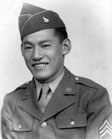
Army Pvt. Joe Hayashi distinguished himself by extraordinary heroism in action on April 20 and 22, 1945, near Tendola, Italy. On April 20, Hayashi ordered an attack on a strongly defended hill that commanded all approaches to the village of Tendola. Hayashi skillfully led his men to a point within 75 yards of enemy positions before they were detected and fired upon. After dragging his wounded comrades to safety, he returned alone and exposed himself to small-arms fire in order to direct and adjust mortar fire against hostile emplacements. On April 22, Hayashi maneuvered his squad up a steep, terraced hill to within 100 yards of the enemy. Crawling under intense fire to a hostile machine gun position, he threw a grenade, killing one enemy soldier and forcing the other members of the gun crew to surrender. Attempting to pursue the enemy, he was mortally wounded by a burst of machine pistol fire. The dauntless courage and exemplary leadership of Hayashi enabled his company to attain its objective. Hayashi’s extraordinary heroism and devotion to duty are in keeping with the highest traditions of military service and reflect great credit on him, his unit and the U.S. Army.
-
Shizuya Hayashi
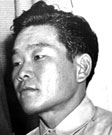
Army Pvt. Shizuya Hayashi distinguished himself by extraordinary heroism in action Nov. 29, 1943, near Cerasuolo, Italy. During a flank assault on high ground held by the enemy, Hayashi rose alone in the face of grenade, rifle and machine gun fire. Firing his automatic rifle from the hip, he charged and overtook an enemy machine gun position, killing seven men in the nest and two more as they fled. After his platoon advanced 200 yards from this point, an enemy anti-aircraft gun opened fire on the men. Hayashi returned fire at the hostile position, killing nine of the enemy, taking four prisoners and forcing the remainder of the force to withdraw from the hill. Hayashi’s extraordinary heroism and devotion to duty are in keeping with the highest traditions of military service and reflect great credit on him, his unit and the U.S. Army.
-
Daniel K. Inouye
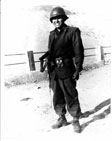
Army 2nd Lt. Daniel K. Inouye distinguished himself by extraordinary heroism in action April 21, 1945, in the vicinity of San Terenzo, Italy. While attacking a defended ridge guarding an important road junction, Inouye skillfully directed his platoon through a hail of automatic-weapon and small-arms fire in a swift enveloping movement that resulted in the capture of an artillery and mortar post and brought his men to within 40 yards of the hostile force. In bunkers and rock formations, the enemy halted the advance with crossfire from three machine guns. With complete disregard for his personal safety, Inouye crawled up the treacherous slope to within five yards of the nearest machine gun and hurled two grenades, destroying the emplacement. Although wounded by a sniper’s bullet, he continued to engage other hostile positions at close range until an exploding grenade shattered his right arm. Inouye continued to direct his platoon until enemy resistance was broken and his men were again deployed in defensive positions. In the attack, 25 enemy soldiers were killed and eight others captured. By his aggressive tactics and indomitable leadership, Inouye enabled his platoon to advance through formidable resistance and was instrumental in the capture of the ridge. Inouye’s extraordinary heroism and devotion to duty are in keeping with the highest traditions of military service and reflect great credit on him, his unit and the U.S. Army.
-
Yeiki Kobashigawa

Army Tech. Sgt. Yeiki Kobashigawa distinguished himself by extraordinary heroism in action June 2, 1944, in the vicinity of Lanuvio, Italy. During an attack, Kobashigawa’s platoon encountered strong enemy resistance from a series of machine guns providing supporting fire. Observing a machine gun nest 50 yards from his position, Kobashigawa crawled forward with one of his men, threw a grenade and then charged the enemy with his submachine gun while a fellow soldier provided covering fire. He killed one enemy soldier and captured two prisoners. Directing a squad to advance to his first position, Kobashigawa again moved forward with a fellow soldier to subdue the second machine gun nest. Kobashigawa provided close supporting fire while a fellow soldier charged, capturing four prisoners. On the alert for other machine gun nests, Kobashigawa discovered four more, and skillfully led a squad in neutralizing two of them. Kobashigawa’s extraordinary heroism and devotion to duty are in keeping with the highest traditions of military service and reflect great credit on him, his unit and the U.S. Army.
-
Robert T. Kuroda
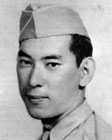
Army Staff Sgt. Robert T. Kuroda distinguished himself by extraordinary heroism in action Oct. 20, 1944, near Bruyeres, France. Leading his men in an advance to destroy snipers and machine gun nests, Kuroda encountered heavy fire from enemy soldiers occupying a heavily wooded slope. Unable to pinpoint the hostile machine gun, he boldly made his way through heavy fire to the crest of the ridge. As he expended the last of his ammunition, he observed an American officer who had been struck by a burst of fire from a hostile machine gun located on an adjacent hill. Rushing to his assistance, he found that the officer had been killed. Picking up the officer’s submachine gun, Kuroda advanced through continuous fire toward a second machine gun emplacement and destroyed the position. As he turned to fire upon additional enemy soldiers, he was killed by a sniper. Kuroda’s courageous actions and indomitable fighting spirit ensured the destruction of enemy resistance in the sector.
-
Kaora Moto

Army Pfc. Kaoru Moto distinguished himself by extraordinary heroism in action July 7, 1944, near Castellina, Italy. While serving as first scout, Moto observed a machine gun nest that was hindering his platoon’s progress. On his own initiative, he made his way to a point near the hostile position and killed the enemy machine gunner. Crawling to the rear of the position, Moto surprised the enemy soldier, who quickly surrendered. While guarding a nearby house and his prisoner, he observed an enemy machine gun team moving into position. He engaged them, and with deadly fire forced the enemy to withdraw. An enemy sniper located in another house fired at Moto, severely wounding him. He changed position to elude the sniper fire and to advance. Opening fire, he wounded several soldiers occupying the position and then crawled forward to a better position, ordering the enemy soldier to surrender. Moto’s extraordinary heroism and devotion to duty are in keeping with the highest traditions of military service and reflect great credit on him, his unit and the U.S. Army.
-
Sadao S. Munemori
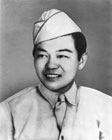
Army Pfc. Sadao S. Munemori served in Company A, 100th Infantry Battalion, 442nd Combat Team. He was posthumously awarded the Medal of Honor for his actions near Seravezza, Italy, April 5, 1945. When his unit was pinned down by grazing fire from the enemy’s strong mountain defense and command of the squad devolved on him with the wounding of its regular leader, he made frontal, one-man attacks through direct fire and knocked out two machine guns with grenades. Withdrawing under murderous fire and showers of grenades from other enemy emplacements, he had nearly reached a shell crater occupied by two of his men when an unexploded grenade bounced on his helmet and rolled toward his helpless comrades. He jumped for the missile and smothered its blast with his body. By his swift, supremely heroic action Munemori saved two of his men at the cost of his own life and did much to clear the path for his company’s victorious advance.
-
Kiyoshi K. Muranaga

Army Pfc. Kiyoshi K. Muranaga distinguished himself by extraordinary heroism in action June 26, 1944, near Suvereto, Italy. Muranaga’s company encountered a strong enemy force in commanding positions and with superior firepower. Muranaga’s mortar squad was ordered to action, but the terrain made it impossible to set up their weapons. Muranaga attempted to neutralize the 88 mm weapon alone. Voluntarily remaining at his gun position, Muranaga manned the mortar himself and opened fire on the enemy gun at a range of approximately 400 yards. With his third round, he was able to correct his fire so that the shell landed directly in front of the enemy gun. Before Muranaga could fire a fourth round, an 88 mm shell scored a direct hit on his position, killing him instantly. Muranaga’s extraordinary heroism and devotion to duty are in keeping with the highest traditions of military service and reflect great credit on him, his unit and the U.S. Army.
-
Masato Nakae
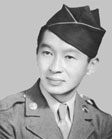
Army Pvt. Masato Nakae distinguished himself by extraordinary heroism in action Aug. 19, 1944, near Pisa, Italy. When his submachine gun was damaged by a shell fragment during a fierce attack by a superior enemy force, Nakae quickly picked up his wounded comrade’s M1 rifle and fired rifle grenades at the steadily advancing enemy. During a concentrated enemy mortar barrage that preceded the next assault by the enemy force, a mortar shell fragment seriously wounded Nakae. Despite his injury, he refused to surrender his position and continued firing at the advancing enemy. By inflicting heavy casualties on the enemy force, he finally succeeded in breaking up the attack and caused the enemy to withdraw. Nakae’s extraordinary heroism and devotion to duty are in keeping with the highest traditions of military service and reflect great credit on him, his unit and the U.S. Army.
-
Shinyei Nakamine
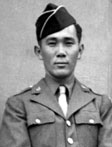
Army Shinyei Nakamine distinguished himself by extraordinary heroism in action June 2, 1944, near La Torreto, Italy. During an attack, Nakamine’s platoon became pinned down by intense machine gun crossfire from a small knoll 200 yards to the front. On his own initiative, Nakamine crawled toward one of the hostile weapons. Reaching a point 25 yards from the enemy, he charged the machine gun nest, firing his submachine gun and killed three enemy soldiers and captured two. Later, under covering fire from his team, Nakamine crawled to a point 25 yards from the nest and threw hand grenades at the enemy soldiers, wounding one and capturing four. Spotting another machine gun nest 100 yards to his right flank, he led the automatic rifle team toward the hostile position but was killed by a burst of machine gun fire. Nakamine’s extraordinary heroism and devotion to duty are in keeping with the highest traditions of military service and reflect great credit on him, his unit and the U.S. Army.
-
William K. Nakamura

Army Pfc. William K. Nakamura distinguished himself by extraordinary heroism in action July 4, 1944, near Castellina, Italy. During a fierce firefight, Nakamura’s platoon became pinned down by enemy machine gun fire from a concealed position. On his own initiative, Nakamura crawled 20 yards toward the hostile nest with fire from the enemy machine gun barely missing him. Reaching a point 15 yards from the position, he quickly raised himself to a kneeling position and threw four hand grenades, killing or wounding at least three of the enemy soldiers. On his own initiative, Nakamura remained in position to cover his comrades’ withdrawal. While moving toward the safety of a wooded draw, his platoon became pinned down by deadly machine gun fire. Crawling to a point from which he could fire on the enemy position, Nakamura quickly and accurately fired his weapon to pin down the enemy machine gunners. His platoon was then able to withdraw to safety without further casualties. Nakamura was killed during this heroic stand. Nakamura’s extraordinary heroism and devotion to duty are in keeping with the highest traditions of military service and reflect great credit on him, his unit and the U.S. Army.
-
Joe M. Nishimoto

Army Joe M. Nishimoto distinguished himself by extraordinary heroism in action Nov. 7, 1944, near La Houssiere, France. After three days of unsuccessful attempts by his company to dislodge the enemy from a strongly defended ridge, Nishimoto, as acting squad leader, boldly crawled forward through a heavily mined and booby-trapped area. Spotting a machine gun nest, he hurled a grenade and destroyed the emplacement. Circling to the rear of another machine gun position, he fired his submachine gun at point-blank range, killing one gunner and wounding another. Pursuing two enemy riflemen, Nishimoto killed one, while the other hastily retreated. Continuing his determined assault, he drove another machine gun crew from its position. The enemy, with its key strong points taken, was forced to withdraw from this sector. Nishimoto’s extraordinary heroism and devotion to duty are in keeping with the highest traditions of military service and reflect great credit on him, his unit and the U.S. Army.
-
Allan M. Ohata
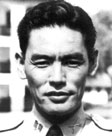
Army Sgt. Allan M. Ohata distinguished himself by extraordinary heroism in action on Nov. 29 and 30, 1943, near Cerasuolo, Italy. Ohata, his squad leader, and three men were ordered to protect his platoon's left flank against an attacking enemy force of 40 men, armed with machine guns, machine pistols and rifles. He posted one of his men, an automatic rifleman, on the extreme left, 15 yards from his own position. Taking his position, Ohata delivered effective fire against the advancing enemy. The man to his left called for assistance when his automatic rifle was shot and damaged. With disregard for his personal safety, Ohata left his position and advanced through heavy machine gun fire. Reaching his comrade’s position, he immediately fired upon the enemy, killing 10 enemy soldiers and successfully covering his comrade’s withdrawal to replace his damaged weapon. Ohata and the automatic rifleman held their position and killed 37 enemy soldiers. Later, Ohata and the automatic rifleman stopped another attacking force of 14, killing four and wounding three while the others fled. Ohata's extraordinary heroism and devotion to duty are in keeping with the highest traditions of military service and reflect great credit on him, his unit and the U.S. Army.
-
James K. Okubo
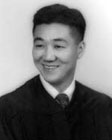
Army Technician Fifth Grade James K. Okubo distinguished himself by extraordinary heroism in action on Oct. 28 and 29, and Nov. 4, 1944, in the Foret Domaniale de Champ, near Biffontaine, eastern France. On Oct. 28, under strong enemy fire coming from behind mine fields and roadblocks, Okubo, a medic, crawled 150 yards to within 40 yards of the enemy lines. Two grenades were thrown at him while he left his last covered position to carry back wounded comrades. Under constant barrages of enemy small arms and machine gun fire, he treated 17 men Oct. 28 and eight more men Oct. 29. On Nov. 4, Okubo ran 75 yards under grazing machine gun fire and, while exposed to hostile fire directed at him, evacuated and treated a seriously wounded crewman from a burning tank who otherwise would have died. Okubo’s extraordinary heroism and devotion to duty are in keeping with the highest traditions of military service and reflect great credit on him, his unit and the U.S. Army.
-
Yukio Okutsu
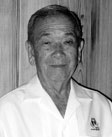
Army Tech. Sgt. Yukio Okutsu distinguished himself by extraordinary heroism in action April 7, 1945, on Mount Belvedere, Italy. While his platoon was halted by the crossfire of three machine guns, Okutsu crawled to within 30 yards of the nearest enemy emplacement through heavy fire. He destroyed the position with two hand grenades, killing three machine gunners. He threw another grenade, silencing a second machine gun, wounding two enemy soldiers and forcing two others to surrender. Ultimately, he enabled his platoon to resume its assault on a vital objective. The courageous performance of Okutsu against formidable odds was an inspiration to all. Okutsu’s extraordinary heroism and devotion to duty are in keeping with the highest traditions of military service and reflect great credit on him, his unit and the U.S. Army.
-
Frank H. Ono
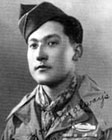
Army Pfc. Frank H. Ono distinguished himself by extraordinary heroism in action July 4, 1944, near Castellina, Italy. In attacking a heavily defended hill, Ono’s squad was caught in a formidable fire from the enemy. Ono opened fire with his automatic rifle and silenced one machine gun. Advancing, he killed a sniper with another burst of fire, and while his squad leader reorganized the rest of the platoon in the rear, he alone defended the critical position. After killing two more enemy soldiers, he ran through automatic, small arms and mortar fire to render first aid to his platoon leader and a seriously wounded rifleman. Volunteering to cover the platoon, Ono occupied virtually unprotected positions near the crest of the hill, engaging an enemy machine gun emplaced on an adjoining ridge and exchanging fire with snipers armed with machine pistols. Completely disregarding his own safety, he made himself the constant target of concentrated enemy fire until the platoon reached the comparative safety of a draw. Ono’s extraordinary heroism and devotion to duty are in keeping with the highest traditions of military service and reflect great credit on him, his unit and the U.S. Army.
-
Kazuo Otani

Army Staff Sgt. Kazuo Otani distinguished himself by extraordinary heroism in action July 15, 1944, near Pieve di Santa Luce, Italy. Advancing to attack a hill objective, Otani’s platoon became pinned down in a wheat field by concentrated fire from enemy machine gun and sniper positions. Realizing the danger confronting his platoon, Otani left his cover and shot and killed a sniper who was firing with deadly effect upon the platoon. Followed by a steady stream of machine gun bullets, Otani then dashed across the open wheat field and directed his men to crawl to the cover of the cliff. Organizing his men to guard against possible enemy counterattack, Otani made his way across the open field, shouting instructions to the stranded men while continuing to draw enemy fire. Reaching the rear of the platoon position, he took partial cover in a shallow ditch and directed covering fire for the men who had begun to move forward. When one of his soldiers became wounded, Otani crawled to him in full view of the enemy. Dragging the wounded soldier to a shallow ditch, Otani proceeded to render first aid treatment, but was mortally wounded by machine gun fire. Otani’s extraordinary heroism and devotion to duty are in keeping with the highest traditions of military service and reflect great credit on him, his unit and the U.S. Army.
-
George T. Sakato
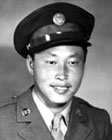
Army Pvt. George T. Sakato distinguished himself by extraordinary heroism in action Oct. 29, 1944, on Hill 617 in the vicinity of Biffontaine, France. After his platoon had virtually destroyed two enemy defense lines, during which he personally killed five enemy soldiers and captured four, his unit was pinned down by heavy enemy fire. Disregarding the enemy fire, Sakato made a one-man rush that encouraged his platoon to charge and destroy the enemy strong point. Taking charge of the squad, he continued his relentless tactics, using an enemy rifle and P38 pistol to stop an organized enemy attack. During this entire action, he killed 12 and wounded two, personally captured four and assisted his platoon in taking 34 prisoners. By continuously ignoring enemy fire, and by his gallant courage and fighting spirit, he turned impending defeat into victory and helped his platoon complete its mission. Sakato’s extraordinary heroism and devotion to duty are in keeping with the highest traditions of military service and reflect great credit on him, his unit and the U.S. Army.
-
Ted T. Tanouye

Army Tech. Sgt. Ted T. Tanouye distinguished himself by extraordinary heroism in action July 7, 1944, near Molino A Ventoabbto, Italy. Tanouye led his platoon in an attack to capture the crest of a strategically important hill that afforded little cover. Observing an enemy machine gun crew placing its gun in position to his left front, Tanouye crept forward a few yards and opened fire on the position, killing or wounding three and causing two others to disperse. While advancing forward, Tanouye was subjected to grenade bursts that severely wounded his left arm. Sighting an enemy-held trench, he raked the position with fire from his submachine gun and wounded several of the enemy. He located another enemy machine gun firing down the slope of the hill, opened fire on it and silenced the position. Eventually taking his objective, Tanouye organized a defensive position on the reverse slope of the hill before accepting first-aid treatment and evacuation. Tanouye’s extraordinary heroism and devotion to duty are in keeping with the highest traditions of military service and reflect great credit on him, his unit and the U.S. Army.
-
Francis B. Wai

Army Capt. Francis B. Wai distinguished himself by extraordinary heroism in action Oct. 20, 1944, in Leyte, Philippines. Wai landed at Red Beach, Leyte, in the face of concentrated enemy fire from gun positions advantageously located in a palm grove bounded by submerged rice paddies. Finding the first four waves of American soldiers leaderless, disorganized and pinned down on the open beach, he immediately assumed command. In leading an assault upon the last remaining Japanese pillbox in the area, he was killed by its occupants. Wai’s courageous, aggressive leadership inspired the men, even after his death, to advance and destroy the enemy. His intrepid and determined efforts were largely responsible for the rapidity with which the initial beachhead was secured. Wai’s extraordinary heroism and devotion to duty are in keeping with the highest traditions of military service and reflect great credit on him, his unit and the U.S. Army.
-
Telesforo Trinidad
While steaming in the Gulf of California Jan. 21, 1915, as part of the naval patrol established to protect U.S. interests and citizens in Mexico, the captain of the San Diego (Armored Cruiser No. 6) decided to conduct a four-hour full-speed and endurance trial to determine if the cruiser could still maintain its officially rated flank speed. At the end of the trials an obstructed tube of one of the ship’s boilers gave way, creating an eventual chain reaction of other boilers. The first explosion, in the No. 2 boiler, forced U.S. Navy Fireman 2nd Class Telesforo Trinidad from the fireroom while Ensign R.W. Cary Jr. was closing the door. Trinidad then realized that another crewmate, Fireman 2nd Class R.W. Daly, was still inside. Risking his own life, Trinidad re-entered the smoke-filled fireroom and carried Daly to safety while Cary secured the door. However, as Trinidad carried Daly through the No. 4 fireroom, an explosion of the No. 3 boiler hit Trinidad, burning him in the face. After seeing Daly to safety and in spite of his own injury, Trinidad then assisted in rescuing another injured crewman from the No. 3 fireroom.